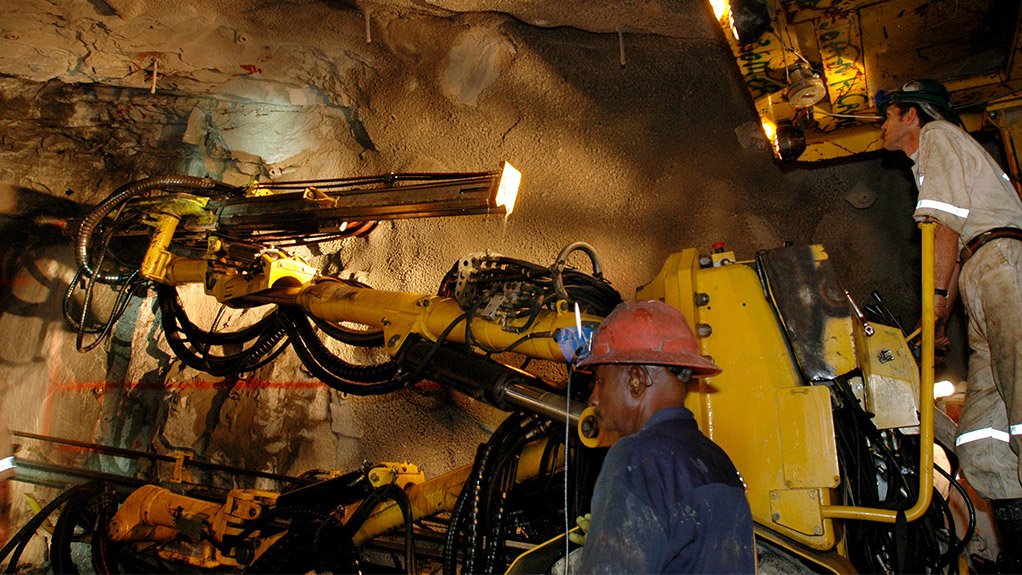Gold supply declining despite increased demand in 2013




WORKFORCE Mineworkers in South Africa impact significantly on the longevity of mines and other micro-businesses supporting mining activities
Photo by Bloomberg
DANIEL HOOIJER Cost pressures and the lack of new capital injection will reduce mining companies’ ability to open new mines and also shorten the life of existing mines
Photo by Orange Communications
GOLD INTERRUPTED While gold prices hit record highs in 2012, they experienced a sharp decline in 2013
Photo by Bloomberg
Adrop in gold recycling and limited production growth by mining compa- nies were the main contributors to the drop in supply of the precious metal during 2013, says professional service firm KPMG gold commodity lead partner Daniel Hooijer.
“While gold prices hit record highs during 2012, we unfortunately experienced a sharp slide in 2013. This was despite the fact that gold demand was relatively strong, boosted by increased demand for jewellery and investment, particularly from India and China,” he notes.
However, he says investors are continuing to move away from exchange-traded funds and gold shares and rather investing in physical gold products, such as jewellery, bars and coins. This will have a material impact on the availability of investor funds for capital projects in the gold mining industry.
Hooijer explains that building a new mine requires significant upfront capital and is an intensive, six- to 10-year process. Reductions in exploration expenditure have resulted in fewer new discoveries, which impacts on the replacement and replenishment of gold reserves and resources by mining companies.
Further, the reduction of development expenditure affects near-mine exploration and ore-reserve development, which, in turn, reduces the life of mines, which has an adverse economic impact on nearby communities.
“Previously, rising costs and mine inflation would influence supply and, in theory, push gold prices higher. This was the trend before the 2013 slide. However, owing to the current global economic conditions, it remains to be seen whether similar trends will occur. Cost pressures and the lack of new capital injection will reduce mining companies’ ability to open new mines and also shorten the life of existing mines,” Hooijer explains.
Costs, in particular, have had a major impact, particular rising electricity, water and labour costs, though the more stringent regulatory and legislative environment of late has also increased the cost of compliance. For investors wanting to fund new mines, the industry is not attractive at the moment, given the high cost increases it has to absorb, he posits.
“In South Africa, there are legislative changes regarding mineral licences, specifically the Mining and Petroleum Resources Development Act, and a review of mining taxes. These uncertainties need to be addressed to improve market perceptions of South African mines and the business case for investment in the country. Further, the Mining Charter will be reviewed later this year, which contributes to mining companies’ uncertainty regarding legislative compliance and possible future expansion,” says Hooijer.
However, the most significant issues facing South African mines are labour and labour unrest, which significantly affect the production, liquidity and profitability of mining companies. Therefore, Hooijer suggests that mining companies and their employees engage more actively in discussions to avoid labour disruptions.
“Productivity levels affect the supply of commodities to the market, which, in turn, impacts on the foreign currency coming into South Africa. Productivity can influence the country’s trade account balance and, indirectly, the exchange rate, the consumer-price inflation and the balance of payments,” he explains.
Gold in South Africa
Most of the gold mines in South Africa are deep-level mines, which generally have higher costs than shallower or openpit mines.
However, Hooijer notes that there are selected deep-level gold mines in South Africa that operate at competitive costs, even when compared with shallower mines.
“With gold reserves slowly depleting, the cost of replacing deep-level gold mines is increasing and the effects of ageing infrastructure are becoming more pronounced. However, where proper forward development has occurred, mining companies have been able to deal with these issues.
“Although there are extreme cost challenges and regulatory uncertainties, particularly in the current low gold price environment, there are still significant gold reserves and resources in South Africa. Therefore, the country remains an important player in the global market,” Hooijer asserts.
Further, the South African gold sector offers a hedge against gold price fluctuation, as the weak rand:dollar exchange rate has softened the blow of the weaker US dollar gold price for South African gold mining companies. “The price of gold per kilogram has remained between R400 000 and R420 000, but should the price fall well below these levels it will be a major concern for the local gold sector,” he cautions.
Hooijer acknowledges that it will be difficult to resolve the many challenges currently facing the gold sector, both in South Africa and internationally.
He says mining companies need to be more flexible and be able to adjust cost structures quickly in response to the fluctuating gold price. “They also need to add flexibility to mine plans and the life-of-mine (LoM) by adjusting their production and mining activities to gold price changes. For example, mining companies need to have several different scenarios for various mining areas, which take into account the grades and recoverability factors of each area.
“Companies need to focus on quick-win, higher grade capital projects, where possible. This means increased short- to medium- term spending on near-mine exploration and ore development at existing mining operations, which will extend LoM and contribute to improved production levels,” Hooijer suggests.
By delivering consistent returns and showing value generation, the gold sector will eventually restore investor confidence. This has to be further supported through the sensible use of available funds, conserva- tive capital expenditure outlays and an increased focus on free cash flow generation.
Hooijer says: “Engagement among stakeholders is more important than ever – mining companies need to improve their engagement with the workforce, electricity and water suppliers, government agencies and local communities, as well as environmental agencies.”
Governments also have a role to play in partnering with mining companies and providing a level of certainty about regulatory compliance, tax regimes, the administration of mining licences and social requirements, adds Hooijer. “Providing certainty enables miners to develop effective business models, that generate value for all stakeholders.”
Finally, the workforce needs to understand the role it plays in combating rising mining costs, ensuring steady gold production, and generating value for local communities through the development of small business that can be incorporated into a mine’s supply chain.
“The workforce in South Africa impacts significantly on the longevity of mines and other microbusinesses supporting mining activities. By understanding its role and engagement with employers, productivity levels can improve and costs can be reduced. This will benefit all stakeholders in the long term,” Hooijer concludes.
Comments
Press Office
Announcements
What's On
Subscribe to improve your user experience...
Option 1 (equivalent of R125 a month):
Receive a weekly copy of Creamer Media's Engineering News & Mining Weekly magazine
(print copy for those in South Africa and e-magazine for those outside of South Africa)
Receive daily email newsletters
Access to full search results
Access archive of magazine back copies
Access to Projects in Progress
Access to ONE Research Report of your choice in PDF format
Option 2 (equivalent of R375 a month):
All benefits from Option 1
PLUS
Access to Creamer Media's Research Channel Africa for ALL Research Reports, in PDF format, on various industrial and mining sectors
including Electricity; Water; Energy Transition; Hydrogen; Roads, Rail and Ports; Coal; Gold; Platinum; Battery Metals; etc.
Already a subscriber?
Forgotten your password?
Receive weekly copy of Creamer Media's Engineering News & Mining Weekly magazine (print copy for those in South Africa and e-magazine for those outside of South Africa)
➕
Recieve daily email newsletters
➕
Access to full search results
➕
Access archive of magazine back copies
➕
Access to Projects in Progress
➕
Access to ONE Research Report of your choice in PDF format
RESEARCH CHANNEL AFRICA
R4500 (equivalent of R375 a month)
SUBSCRIBEAll benefits from Option 1
➕
Access to Creamer Media's Research Channel Africa for ALL Research Reports on various industrial and mining sectors, in PDF format, including on:
Electricity
➕
Water
➕
Energy Transition
➕
Hydrogen
➕
Roads, Rail and Ports
➕
Coal
➕
Gold
➕
Platinum
➕
Battery Metals
➕
etc.
Receive all benefits from Option 1 or Option 2 delivered to numerous people at your company
➕
Multiple User names and Passwords for simultaneous log-ins
➕
Intranet integration access to all in your organisation





















